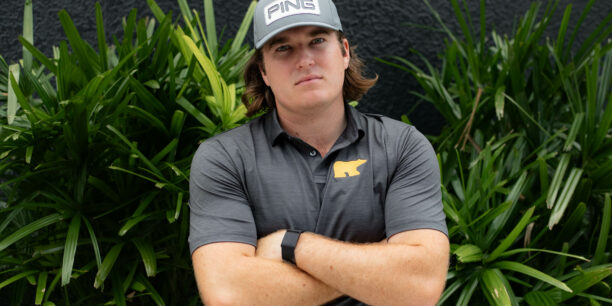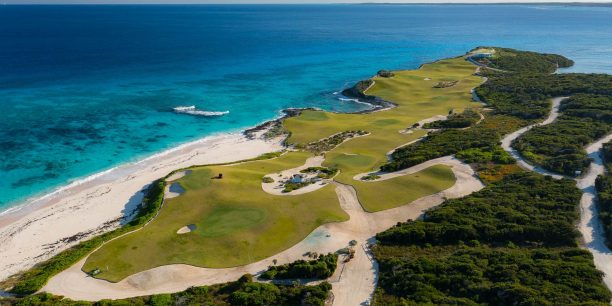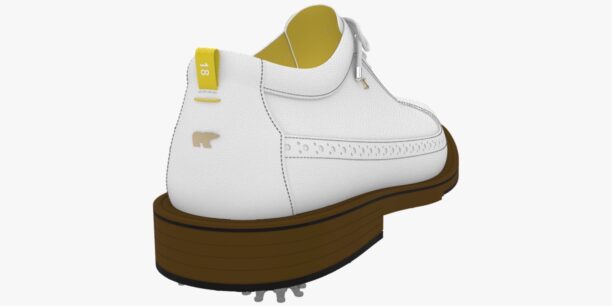“I have always considered the U.S. Open the most important major championship to me ,” says four-time U.S. Open champion Jack Nicklaus. “ Because I am an American, there is a special connection to that major and an enormous sense of satisfaction when one is fortunate to win it.”
This week, the U.S. Open returns to Oakmont Country Club where Nicklaus won his first major championship at age 22, defeating hometown favorite Arnold Palmer and dethroning “The King” to kickoff a lifelong friendly rivalry.
That first major championship in 1962 set the tone for Nicklaus’ record-setting golf career—a record 18 professional major championship victories and 120 professional tournament victories worldwide. Today, the United States Golf Association Museum has cemented the Golden Bear’s golf legacy in a dedicated Jack Nicklaus Room (alongside galleries that honor his idol Bob Jones, Ben Hogan, Mickey Wright, and Palmer). This week’s winner will also receive the Jack Nicklaus Medal.
It all began at Oakmont Country Club in Oakmont, Pa. outside of Pittsburgh back in 1962.
“I first saw Oakmont two weeks before the ’62 U.S. Open. I played a few practice rounds and knew it was perfect for me,” Nicklaus said. “I was very comfortable at Oakmont. I got there early and I really liked it.”
He’d already won the 1959 and 1961 U.S. Amateurs, and in his debut season, Nicklaus had made 17 starts in the U.S., placing 50th to win $33.33 in his first-ever event as a professional, the Los Angeles Open. He already had seven top-10s and 11 top-20s, but he was unquestionably “the new guy.” With the competitive fire that he is now known for burning bright, the young Nicklaus faced the tough course determined to win in order to become a major champion.
“I felt this was my tournament to win and after I opened with 72-70 (paired with Palmer) I was feeling confident because I loved playing 36 holes on Saturday, which we did until 1965. I just loved to play, just as I loved to play two matches a day in the Amateur. I was 22 years old and I had blinders on,” Nicklaus said.
The galleries, nicknamed “Arnie’s Army,” didn’t even phase the blonde boy from Columbus, Ohio. They carried signs, chanted, and jumped so hard on the greens that the earth shook below them. And Nicklaus, none the wiser, didn’t notice a thing.
“In 1962, I didn’t know Arnold was from the Pittsburgh area. I didn’t even know where Latrobe was,” he said.
“The crowd never registered with me. I didn’t care if I was playing Arnold or Gary (Player) or anyone else. You can’t control anyone else in a tournament and you can’t play anyone else’s game. You just have to play your own game. You have to play the course but be aware of where you are in the tournament. I thought that if I played well I’d do okay and if I didn’t play well, it didn’t matter to me what anyone else did.
“I’ll say this: Arnold never flaunted his galleries. I have always joked that while I might have had to fight Arnie’s Army, I never had to fight Arnold. Right from the beginning, he was always very considerate. Look, in golf, the galleries always root for heroes and Arnold was the hero. I was just this young kid. It had nothing to do with me. It had everything to do with Arnold, whom people loved.”
The Golden Bear conquered the famous layout with rounds of 72-70-72-69. Palmer retaliated tit for tat scoring 71-68-73-71. The competitors finished tied at 283 ahead of T3 finishers Bobby Nichols and Phil Rodgers.
“It was interesting that both Arnold and I had putts on 18 to win and we both missed,” Nicklaus said.
The U.S. Open is a unique major championship in several ways including how they break a tie after 72 holes. The USGA has held firm in upholding the tradition of a full 18-hole playoff to decide a champion if there is a tie in the final round. In 116 championships, there have been 33.
But there was more than just a playoff going on inside the ropes. History was being made with every stroke. The likeable and well-known Arnold Palmer wasn’t only a hometown hero with a dedicated following. The King was a 32-year-old player already with 33 wins on the PGA TOUR including his five major championship victories. He’d won the U.S. Open in 1960 and the Masters in 1958, 1960, 1961, and 1962. In a game where learning how to win is key, Palmer had the stuff.
Going into the playoff, Palmer offered to split the purse with Nicklaus but the Golden Bear turned him down.
“Back then, it wasn’t uncommon for players to split purses in a playoff. A lot of the guys on TOUR were club pros who played in the winter when their clubs were closed. They might agree to pool their winnings and split them up,” Nicklaus said.
“Arnold came up to me before we went out and asked me if I wanted to split the purse. He wasn’t trying to psych me out or anything. He was just offering me the option. I said, ’No, let’s just play for it.’ I don’t know if I was being cocky or courteous but anyway, golf was never about the money for me or Arnold. We just loved to play the game.”
The Golden Bear remembers the playoff well.
“I got off to a fast start and was four strokes up after the eighth hole. Arnold birdied nine, 11 and 12 but I made a par on 13 and Arnold made a bogey. That gave me a two-shot lead and we were pretty much even the rest of the way. On 18, Arnold drove it into the rough and hit his second shot over the green, leaving himself a really difficult pitch. I also hit a poor drive and decided to lay up short of the cross bunkers, which I felt was the smart play.
“Chick Hearn, who was the announcer on the telecast (and the long-time play-by-play announcer for the Los Angeles Lakers), said, ‘Oh my gosh, that’s his worst shot of the tournament. He’s choking.’ Chick was a great basketball announcer but he didn’t know much about golf.
“Anyway, I had a tap-in for a bogey and a 71 while Arnold had a 74. For a minute, when I realized I had won, I forgot that it was medal play, so I assumed Arnold would give me the putt and I picked my ball up. Joe Dey had to remind me to replace the ball and putt out.”
At the time, it was a big payday for the Golden Bear—much larger than his first paycheck of $33.33. Nicklaus earned $15,000 for his first professional win, and Palmer $8,000 as runner-up. They both received a playoff bonus of $2,500 from Sunday’s gate receipts. (In contrast, this week’s winner gets a cool $1.8 million).
Today, the importance of his 1962 U.S. Open victory is not lost on Nicklaus.
“It gave me a lifetime exemption and it set up my career because I could pick and choose the tournaments that were the best for me. If I had won the Open in 1960 or ’61 it would have probably been too soon and I might not have worked as hard as I did. By the time I won at Oakmont, I was mature enough to know I had to keep growing and keep climbing the next mountain. Besides, I came back to earth pretty quickly when I went to Troon for the British Open and lost to Arnold by nine shots. Then in 1963, I bogeyed the last two holes to lose the British Open. I thought I was smarter than that,” Nicklaus says.
In the years since, much has been written about the storied rivalry—and friendship—shared by Nicklaus and Palmer. Looking at 1962-64, the period bookended by Nicklaus’ first major and Palmer’s last, they won six of 12 majors (three each) and combined for five runner-up finishes. It is the subject of documentaries, books, and debates amongst sports fans.
But now at 76 and 86 years old, at the end of the day all that remains of the competition shared by Nicklaus and Palmer is a close and enduring friendship. These days, they’re collaborating on a golf course design at The Greenbrier in White Sulphur Springs, W.Va. alongside Gary Player and Lee Trevino. In addition to golf course design, both men share a love for family and supporting pediatric causes. They also both are recipients of the prestigious Congressional Gold Medal.
“Oakmont has always been such a very special place to both of us, and it was the backdrop for one of our great battles on the golf course. The victory I was fortunate to take away from the 1962 U.S. Open was essentially the start of my professional major-championship career. That week at Oakmont also represented the start of a healthy career-long rivalry with Arnold, but far more important, the start of a lifelong friendship.”
In honor of their 1962 playoff, the USGA named Jack Nicklaus and Arnold Palmer honorary co-chairmen of this week’s 116th U.S. Open Championship being played at Oakmont for the ninth time. In all of the club’s iconic history, perhaps no other match is so special as that week back in ’62.



